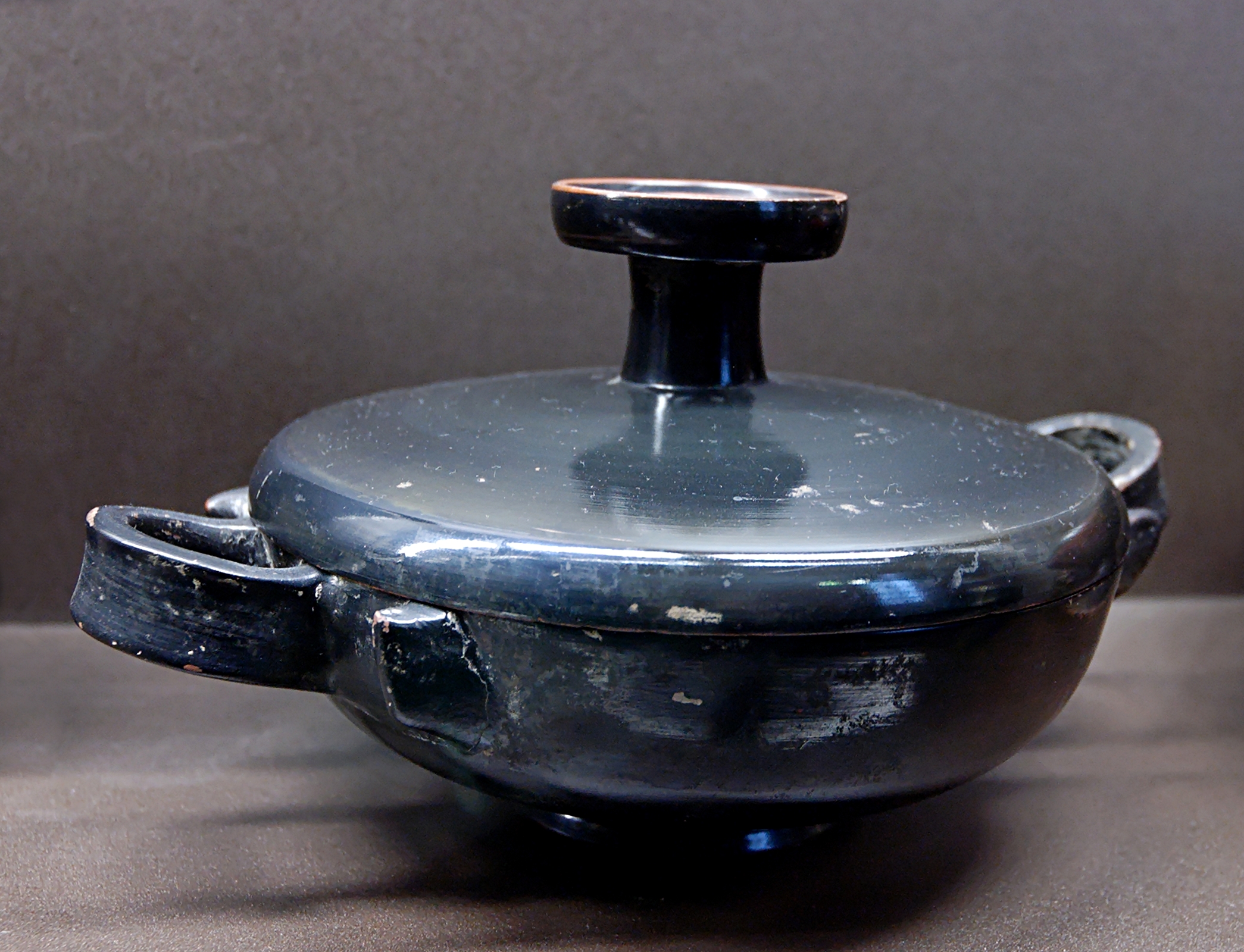Black-glazed Ware on:
[Wikipedia]
[Google]
[Amazon]

 Black-glazed ware is a type of
Black-glazed ware is a type of

 Black-glazed ware is a type of
Black-glazed ware is a type of ancient Greek
Ancient Greek includes the forms of the Greek language used in ancient Greece and the ancient world from around 1500 BC to 300 BC. It is often roughly divided into the following periods: Mycenaean Greek (), Dark Ages (), the Archaic peri ...
fine pottery. The modern term describes vessels covered with a shiny black slip.
Black-glazed pottery was produced especially in the Classical and Hellenistic
In Classical antiquity, the Hellenistic period covers the time in Mediterranean history after Classical Greece, between the death of Alexander the Great in 323 BC and the emergence of the Roman Empire, as signified by the Battle of Actium in ...
periods. During the reducing phase of the three-phase firing
Three-phase firing (or three-step firing) or iron reduction technique is a firing technique used in ancient Greek pottery production, specifically for painted vases. Already vessels from the Bronze Age feature the colouring typical of the tech ...
sintering
Clinker nodules produced by sintering
Sintering or frittage is the process of compacting and forming a solid mass of material by pressure or heat without melting it to the point of liquefaction.
Sintering happens as part of a manufacturing ...
of the iron-rich "clay paint" led to a shiny black glaze. Such pottery was produced both on the potter's wheel
In pottery, a potter's wheel is a machine used in the shaping (known as throwing) of clay into round ceramic ware. The wheel may also be used during the process of trimming excess clay from leather-hard dried ware that is stiff but malleable, a ...
or impressed in pre-shaped matrixes. The glaze, originally in the form of a fine grained clay paint, was added on with a paintbrush on the wheel, or by dipping. In some cases, black-glazed ware was additionally decorated with white, red or gold paint. Plastic decoration, either applied by stamp, or as applied reliefs, also occurred. Within about a hundred years, during the 5th century BC, black-glazed wares replaced the previously popular red-figure pottery
Red-figure vase painting is one of the most important styles of figural Greek vase painting.
It developed in Athens around 520 BCE and remained in use until the late 3rd century BCE. It replaced the previously dominant style of black-figure vas ...
from the Mediterranean markets. Since the Hellenistic periods, non-Greek workshops also produced it, usually just serving local or regional markets. In recent years, the importance of the type in modern research has increased considerably, especially in the contexts of culinary habits, regional contacts and trade links.
Bibliography
* Roald F. Doctor: Schwarzfirniskeramik. In:Der Neue Pauly
Der or DER may refer to:
Places
* Darkənd, Azerbaijan
* Dearborn (Amtrak station) (station code), in Michigan, US
* Der (Sumer), an ancient city located in modern-day Iraq
* d'Entrecasteaux Ridge, an oceanic ridge in the south-west Pacific Ocean ...
, vol. 11, cols. 281-282.
*The lost art of Attic black glaze ware . https://www.youtube.com/watch?v=4ILGcewvm0k
{{Greek vase painting
Ancient Greek vase-painting styles